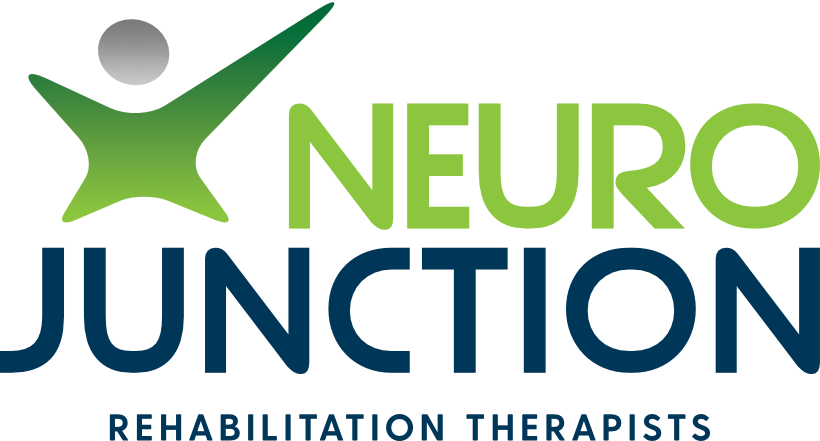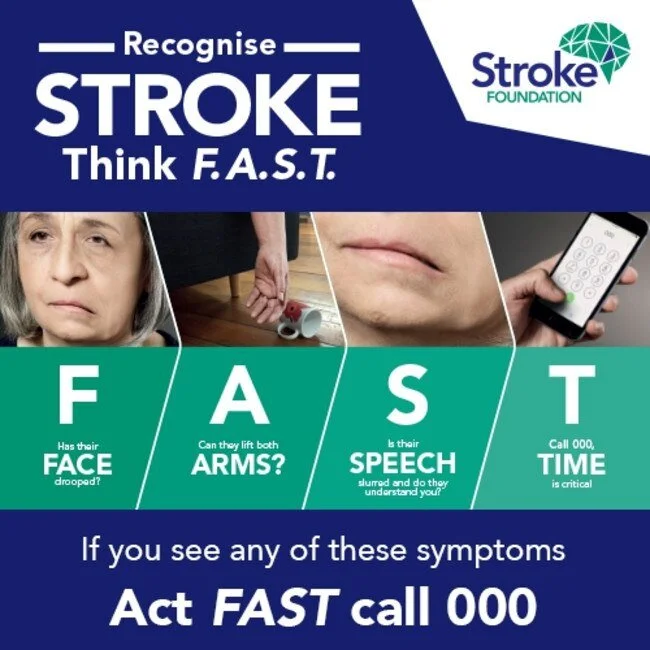National Stroke Week 8-14 August 2022
Stroke
A stroke happens when the blood supply to the brain is interrupted, usually in the form of a blood clot or a bleed in the brain. This can affect a number of different brain functions, such as movement or speech.
Strokes can happen to anyone at any age and time. Men are at greater risk than women, and our risks increase as we get older. However, stroke is highly preventable. Some of the risk factors that we can control include high blood pressure, being overweight, smoking, high cholesterol, a high alcohol intake, and diabetes.
A TIA (Transient ischaemic attack), is similar to a stroke. It is when the blood supply to your brain is blocked but only for a short time. A TIA has the same signs as a stroke but the symptoms usually go away on their own.
Signs of a stroke: FAST
Face – check their face. Has their mouth drooped?
Arms – can they lift both arms?
Speech – is their speech slurred? Do they understand you?
Time – TIME is critical. Call triple zero (000) immediately If you see any of these signs.
Stroke Rehabilitation and Recovery
Recovery post stroke happens dramatically initially, as the swelling in the brain goes down. Over the next few months, the recovery will continue with early and comprehensive rehabilitation. This rehabilitation involves both medical and allied health staff, such as physiotherapists and occupational therapists. Research suggests that significant recovery is still possible years after the stroke, with the right advice and exercises.
The role of physiotherapy is to assist with the recovery of movement and sensation, to better participate in everyday activities – such as walking. Physiotherapists are experts at working out the correct assistance required for walking and using hands-on techniques and specific exercises to improve your walking post-stroke. Following stroke, your balance and coordination may also be affected. Physiotherapists will help prescribe and supervise appropriate exercises to combat this. The lifestyle modifications to prevent a secondary stroke are also advocated by a Physiotherapist. The more active and engaged you are in therapy sessions, the better your overall recovery.
An occupational therapist help stroke survivors manage day to day tasks, such as dressing and showering, as well as helping people return to work and leisure activites after stroke. Occupational therapists are also trained to help with thinking or memory problems, as well as upper limb (hand or arm) problems.
The Physiotherapists and Occupational therapists here at NeuroJunction are well informed on stroke and provide evidence-based care and therapy to all our clients that have suffered a stroke. We adopt an individualized one-on-one approach to tailor a rehabilitation program specific to you. If you or your family has suffered a stroke and are in need of some allied health interventions, call our office to book in now.
https://enableme.org.au/ Is a branch of the stroke foundation that provides resources for stroke survivors and their families. It is also an online community website for stroke survivors.
For More Information:
https://choose.physio/your-condition/stroke-recovery
https://informme.org.au/media/x3alno5f/summary-occupational-therapy.pdf



